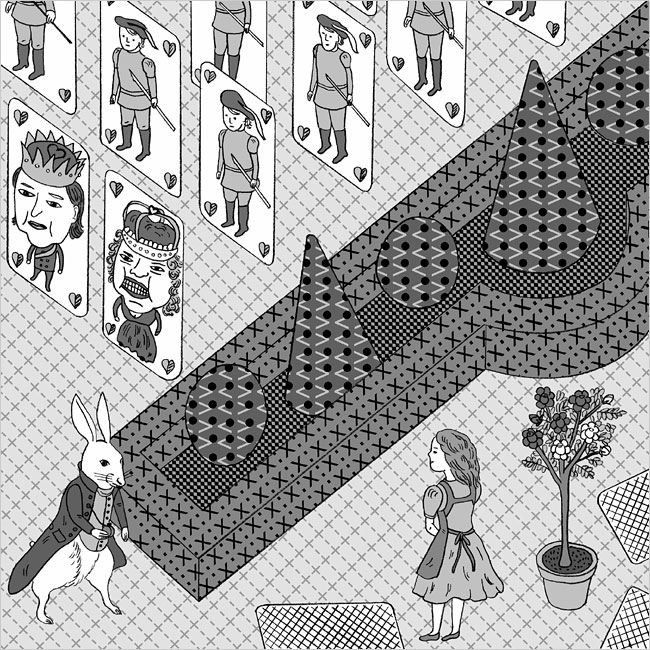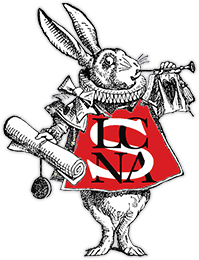
I’m curious what members of the LCSNA think of this article on the Sunday New York Times Opinion Page, “Algebra in Wonderland” by Melanie Bayley. The author is a “doctoral candidate in English literature at Oxford University.” The article goes thru the various vignettes of AAiW explaining declaratively how each scene stands as a parody of the new mathematics emerging in the 19th century. After a scene-by-scene breakdown of the book (the pig baby is a comment on topology, naturally), she wraps up:
Alice will go on to meet the Queen of Hearts, a “blind and aimless Fury,” who probably represents an irrational number. (Her keenness to execute everyone comes from a ghastly pun on axes — the plural of axis on a graph.)
How do we know for sure that “Alice” was making fun of the new math? The author never explained the symbolism in his story. But Dodgson rarely wrote amusing nonsense for children: his best humor was directed at adults. In addition to the “Alice” stories, he produced two hilarious pamphlets for colleagues, both in the style of mathematical papers, ridiculing life at Oxford.
It’s a good article to alert the newspaper reading public that Carroll was also a mathematician, but I’m nervous about all of this “probably represents” business, as if she finally figured out the true meanings in Carroll’s book. And what’s with statements like “Dodgson rarely wrote amusing nonsense for children”?



I think that the author is reaching for straws, but often that is what people do in doctoral dissertations. Only Dodgson himself could say that she was absolutely wrong, so it is safe for her to make these wild conjectures. Any one of us could go through his books and find math words and analogies. Axes for Axis is not a revelation. I hope that some true Carroll scholars are on her dissertation committee. I have to disagree with several of her statements. Lewis Carroll wrote pure nonsense for children in many of his poems and stories. I also disagree about her assessment of Sylvie and Bruno, which I find wonderfully amusing. I especially like the Mad Gardener’s poems, which seem to me to be pure nonsense. I love the profesor, too.
Plus, it’s the Duchess who makes the axis/axes pun.
In 1984 I published an article in which I argued that “The _Alices_ embodied the mathematician Dodgson’s misgivings about symbolical algebra, the major British contribution to mathematics of the first half of the nineteenth century.” To examine the evidence for my thesis, see: Helena M. Pycior, “At the Intersection of Mathematics and Humor: Lewis Carroll’s _Alices_ and Symbolical Algebra,” _Victorian Studies_ 28, 1 (Autumn 1984): 149-170. The article was reprinted in _Energy and Entropy: Science and Culture in Victorian Britain_, ed. Patrick Brantlinger (Indiana University Press, 1989).